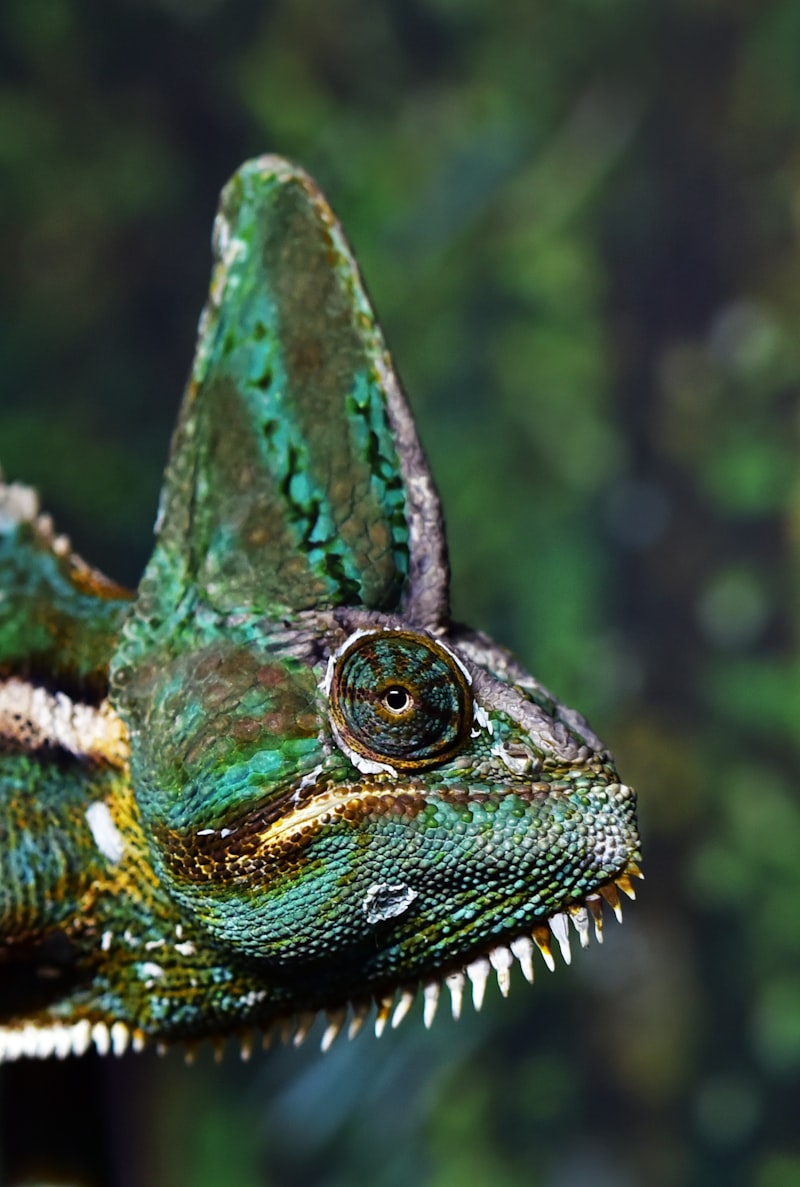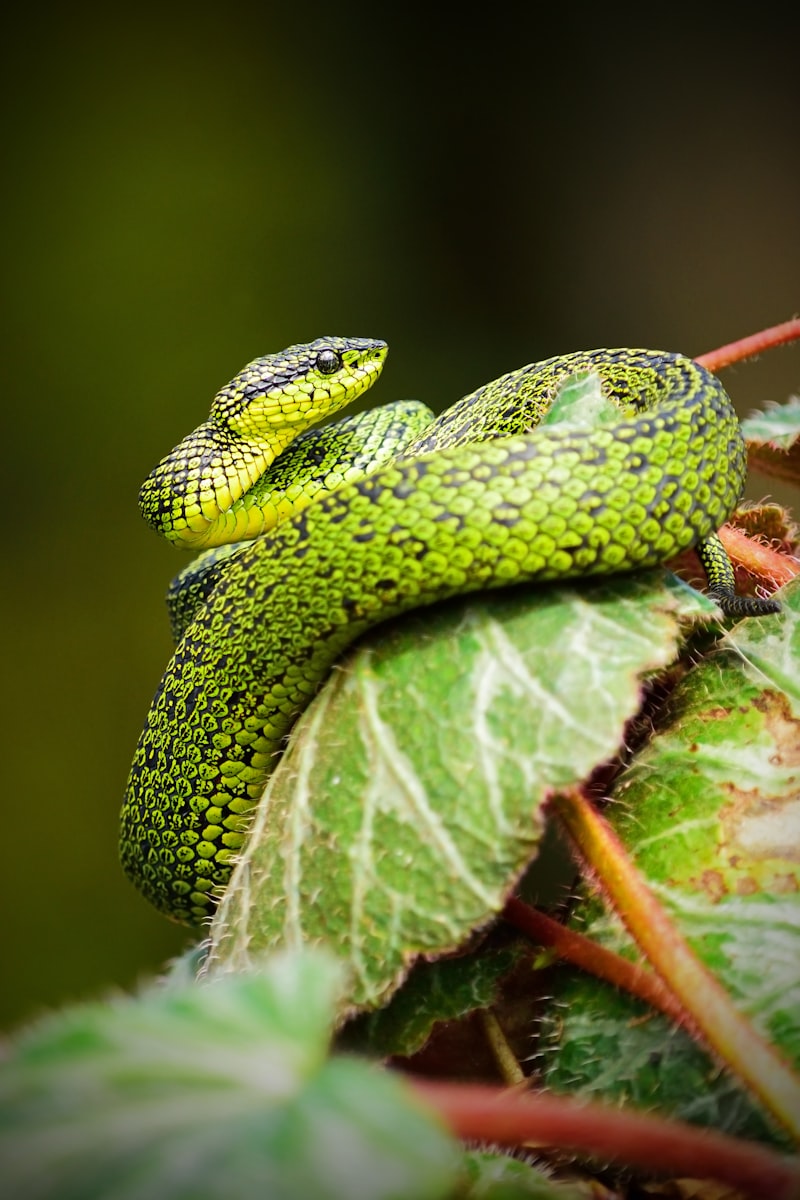Firstly, choose the right terrarium size and type based on the species you plan to keep. Different reptiles have varying space requirements and habitat preferences, so it’s crucial to research their needs beforehand. For instance, arboreal species like chameleons require tall terrariums with plenty of vertical space, while terrestrial species like geckos may thrive in longer enclosures with ample floor space.
Next, select appropriate substrate materials that mimic the natural environment of your reptile. Substrates can vary from coconut fiber for tropical species to sand or reptile carpet for desert dwellers. Ensure the substrate is non-toxic and easy to clean to maintain your reptile’s health.
Temperature and lighting are critical factors in a reptile terrarium setup. Most reptiles require specific temperature gradients and UVB lighting to regulate their metabolism and maintain proper calcium levels. Use a combination of heat lamps, ceramic heaters, and UVB bulbs to create these gradients, replicating day-night cycles as closely as possible.
Decoration and hiding spots are essential for your reptile’s comfort and well-being. Incorporate natural elements like rocks, branches, and plants to provide hiding places and climbing opportunities. Artificial plants can also add to the aesthetic appeal while offering security for your pet.
Lastly, maintain a regular cleaning schedule to keep the terrarium hygienic. Remove uneaten food, feces, and shed skin promptly to prevent bacterial growth and maintain air quality. Regularly monitor temperature and humidity levels using reliable gauges to ensure they remain within optimal ranges for your reptile species.
By following these guidelines and adjusting them based on your specific reptile’s needs, you can create a thriving habitat that supports their health and happiness. Remember, each reptile species is unique, so tailor your terrarium setup to meet the individual requirements of your scaly companion.
Mastering the Basics: Step-by-Step Guide to Setting Up Your Reptile Terrarium
First things first: choose the right terrarium size. It should accommodate your reptile’s size and species-specific needs. Remember, a spacious enclosure allows for natural movement and behavioral expression.
Next, substrate selection is crucial. Think of it as the foundation of your terrarium. Different reptiles prefer different substrates – some like it sandy for burrowing, while others prefer a more humid environment with moss or bark. Research your reptile’s natural habitat to mimic it accurately.
Now, let’s talk about heating and lighting. Reptiles are cold-blooded, so they rely on external sources to regulate their body temperature. Install a heat lamp or heat pad to create a warm basking spot, essential for digestion and overall health. UVB lighting is equally important for reptiles that require it for synthesizing vitamin D3, crucial for calcium metabolism.
Decorate thoughtfully. Branches, rocks, and plants not only beautify the terrarium but also provide enrichment and hiding spots. Choose non-toxic plants and ensure all décor items are securely placed to prevent accidents.
Maintaining proper humidity levels is another key aspect. Some reptiles, like tropical species, need higher humidity, while desert dwellers require drier conditions. Invest in a quality hygrometer to monitor humidity levels regularly.
Lastly, establish a routine for cleaning and maintenance. Regularly spot clean waste and replace substrate as needed. Clean water bowls and dishes frequently to prevent bacterial growth.
Creating the Perfect Habitat: Essential Components for Your Reptile Terrarium
Imagine stepping onto a plush carpet versus a bed of nails—it’s the same for your reptile. The substrate, or bedding, isn’t just for looks; it plays a crucial role in maintaining humidity levels and providing a comfortable surface. For desert dwellers like bearded dragons, sand or reptile carpet mimics their arid homeland. Meanwhile, forest species like tree frogs thrive on coconut fiber or moss that holds moisture, reminiscent of their lush, damp habitats.

Ever notice how reptiles bask in the sun? That’s because they need UVB light to synthesize vitamin D3, crucial for calcium absorption and overall health. A combination of UVB-producing fluorescent bulbs and heat lamps create a gradient of warmth in the terrarium. This allows your reptile to regulate its body temperature by moving between cooler and warmer areas, just like they would in nature.
Would you enjoy living in a bare room with no furniture? Of course not! Reptiles need places to explore, hide, and feel secure. Incorporate rocks, branches, and artificial plants to create a naturalistic environment. These not only beautify the terrarium but also serve as climbing surfaces and shelters. Snakes, for instance, love to curl up in snug hides, reducing stress and promoting natural behaviors.
Every creature needs water to survive, and reptiles are no exception. Depending on the species, provide a shallow water dish for drinking and soaking. Additionally, some reptiles require higher humidity levels to stay healthy. This can be achieved through misting, incorporating humidity-loving plants, or using a substrate that retains moisture.
Owning a reptile terrarium is like having a mini ecosystem—you’re responsible for its upkeep. Regularly clean the substrate, water dish, and decorations to prevent bacteria buildup. Monitor temperature and humidity levels with reliable gauges to ensure they’re within the optimal range for your pet’s species.
Creating the perfect habitat for your reptile isn’t just about recreating their natural environment—it’s about enriching their lives and ensuring their well-being. By focusing on these essential components—substrate, lighting and heating, decoration and hideouts, water and humidity, and maintenance—you’ll be well on your way to providing a happy and healthy home for your scaly friend.
From Glass to Gravel: Choosing the Best Substrate for Your Reptile
Gravel substrates come in various sizes and compositions, allowing you to select one that best suits your reptile’s species and habitat requirements. Unlike glass, which can be sterile and unnatural, gravel provides a more naturalistic feel, resembling the terrain found in many reptile native habitats. This natural feel is not only visually appealing but also helps in creating a comfortable environment where reptiles can exhibit their natural behaviors such as burrowing or digging.
Moreover, gravel substrates are beneficial for maintaining proper humidity levels within the enclosure. They can absorb excess moisture while allowing for adequate drainage, which is particularly important for reptiles that require specific humidity levels to thrive. This helps in preventing issues like respiratory infections or skin problems that can arise from overly damp or dry conditions.
Another advantage of using gravel is its durability and ease of maintenance. Unlike some substrates that may need frequent replacement or cleaning, gravel can be easily spot cleaned and maintained. This makes it a practical choice for reptile owners looking to create a low-maintenance yet enriching environment for their pets.
When selecting gravel substrate, it’s essential to consider the size of the particles to ensure they are not too small, which could pose a swallowing hazard for smaller reptiles, or too large, which may impede movement or digging behaviors. Choosing a substrate that is non-toxic and inert is also important to avoid any potential harm to your reptile.
Transitioning from glass to gravel substrate offers reptile owners a chance to create a more natural, visually appealing, and practical habitat for their pets. By mimicking natural environments and providing benefits like improved humidity control and ease of maintenance, gravel substrates are a popular choice among enthusiasts seeking to optimize their reptile’s living conditions.
Temperature Control 101: How to Maintain Optimal Conditions in Your Terrarium
First off, understanding the specific temperature needs of your pet is key. Different species require different temperatures to thrive. For instance, tropical reptiles like snakes and geckos often prefer temperatures ranging from 75°F to 85°F during the day, with a slight drop at night. On the other hand, desert dwellers such as bearded dragons and tortoises may need a warmer environment, around 85°F to 95°F during the day.

To achieve and maintain these temperatures, you’ll need reliable heating and cooling devices. Heat lamps, heat mats, and ceramic heat emitters are popular choices for providing warmth, while fans or air conditioners can help cool down the terrarium if needed. It’s essential to invest in quality equipment that won’t fluctuate wildly and can maintain a consistent temperature throughout the day and night.
Monitoring the temperature regularly is another critical step. Use a digital thermometer to check the temperature at various spots within the terrarium. This ensures that there are no hot spots or cold drafts that could stress out your pets. Remember, reptiles and amphibians are sensitive to temperature changes, so even a few degrees can make a big difference to their health.
Creating temperature gradients is also beneficial. This means providing areas within the terrarium where your pets can move between warmer and cooler spots as they please. This mimics their natural behavior in the wild, where they regulate their body temperature by moving to different microclimates.
Lastly, don’t forget about humidity! Temperature and humidity often go hand in hand when it comes to creating the perfect environment for your terrarium pets. Certain species require specific humidity levels to stay healthy, so invest in a hygrometer to monitor humidity and use misters or humidifiers as needed.
By paying attention to these temperature control basics, you’ll be well on your way to creating a comfortable and healthy habitat for your terrarium pets. After all, a happy pet is a healthy pet!
Choosing the Right Lighting: Illuminating Your Reptile’s Home
UVB lighting mimics natural sunlight and is vital for reptiles that require it for metabolic processes. Species like bearded dragons, turtles, and chameleons need adequate UVB exposure to prevent metabolic bone disease, a common issue in captive reptiles lacking proper UVB lighting.
On the other hand, UVA lighting enhances reptile behaviors, including feeding, mating, and overall activity levels. It helps create a more natural environment, encouraging your pet’s natural instincts.
When choosing lighting, opt for full-spectrum bulbs designed specifically for reptiles. These bulbs emit both UVB and UVA rays, replicating natural sunlight more closely. Place the bulbs at the appropriate distance from your reptile’s basking spot to ensure they receive the right amount of exposure without overheating.
Consider the size and type of your reptile’s enclosure when selecting lighting. Larger terrariums may require multiple light sources to ensure adequate coverage throughout the habitat. Temperature regulation is also critical; some reptiles, like desert species, need basking spots with higher temperatures, achievable with specific heat bulbs in addition to UV lighting.
Finally, regularly monitor your lighting setup to ensure bulbs are replaced according to manufacturer recommendations. Over time, UV output diminishes even if the bulb still emits visible light. This maintenance ensures your reptile continues to thrive in a well-lit, healthy environment.
Frequently Asked Questions
How do I regulate temperature and humidity in a terrarium
Learn effective methods to regulate temperature and humidity in your terrarium for optimal conditions. Discover practical tips on adjusting ventilation, using appropriate heating and cooling devices, and choosing suitable substrates to maintain a healthy environment for your reptiles or plants.
How do I choose the right size terrarium for my reptile
Learn how to select the perfect terrarium size for your reptile with our concise guide. Find out the key factors to consider, ensuring a comfortable and safe environment for your pet.
What are the essential components of a reptile terrarium setup
A well-set-up reptile terrarium includes a secure enclosure, proper heating elements, adequate lighting, a humidity control system, and a suitable substrate. Additionally, provide hiding spots, climbing structures, and clean water to ensure a healthy and comfortable environment for reptiles.
What substrate is best for different types of reptiles
Learn about the best substrate choices for various types of reptiles with our concise guide. Discover optimal bedding options tailored to your pet’s species to ensure their health and comfort.
What lighting is necessary for my reptile’s terrarium
Learn about the essential lighting requirements for your reptile’s terrarium, ensuring optimal health and habitat conditions.



